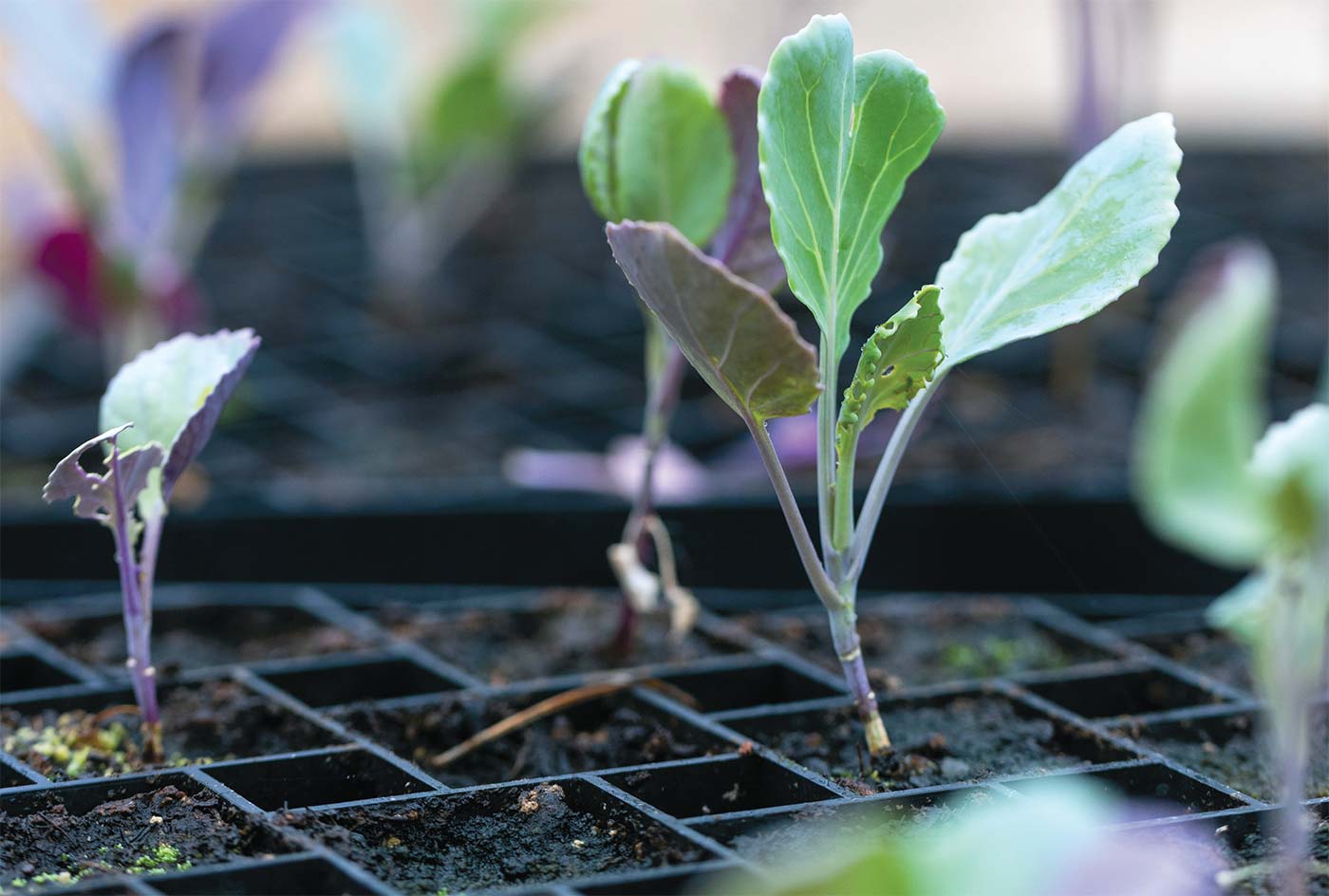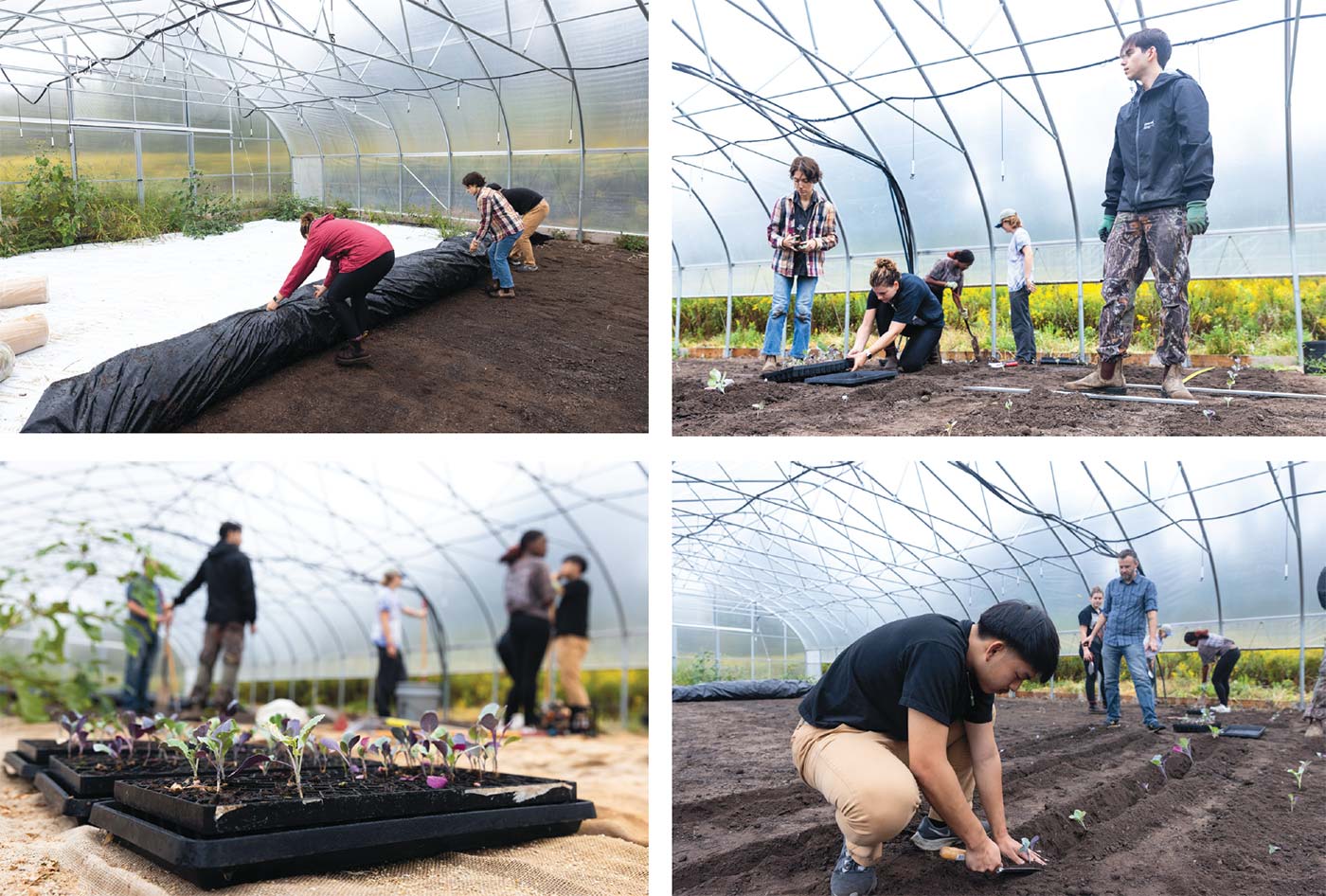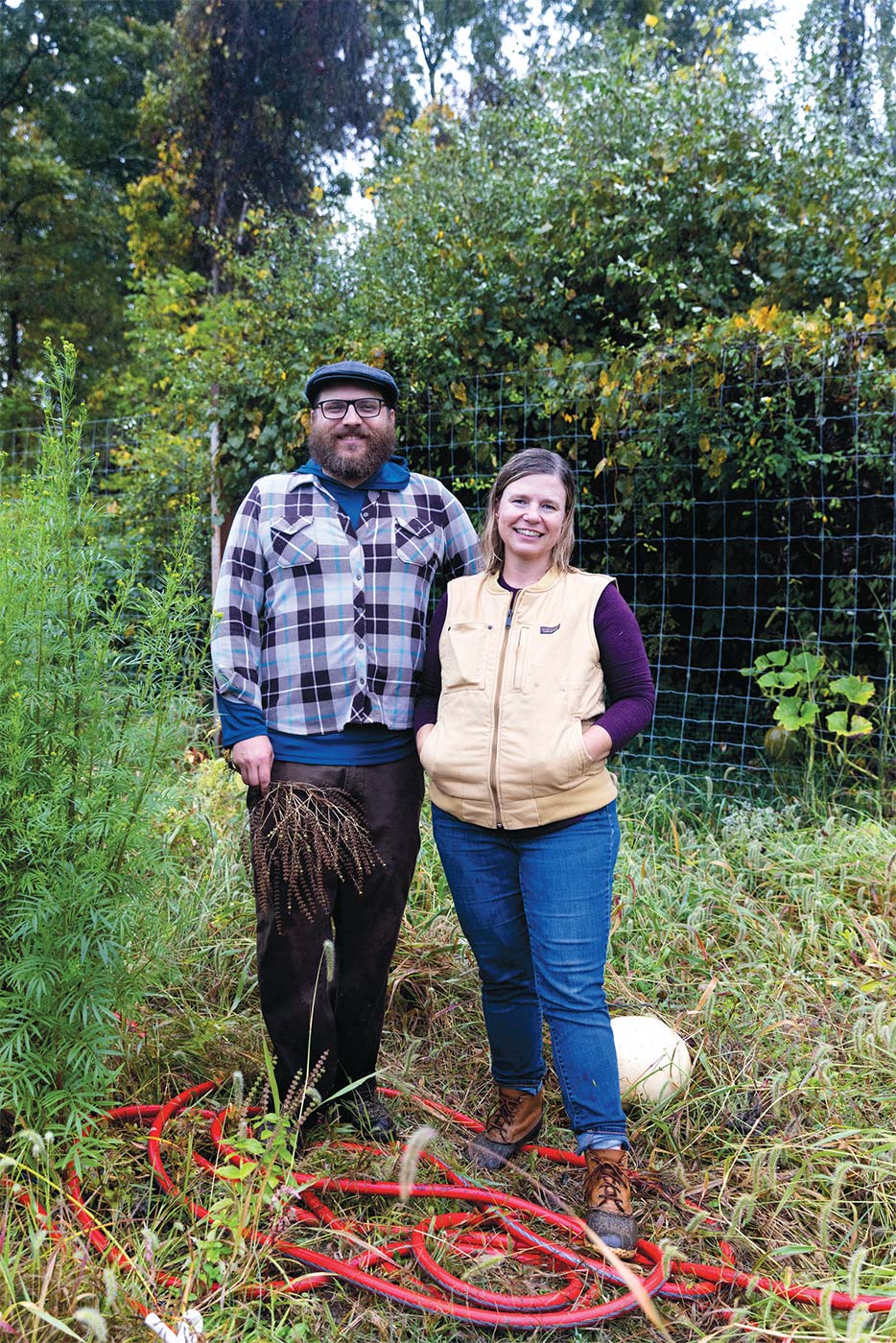The Seed Farm

A researcher’s fascination with rare seeds and the people who keep them has inspired a new initiative. Welcome to Princeton University’s Seed Farm.
Wrapped in their protective shells, seeds are portable, shareable, tangible links to the past. Along with the genetic history of selection by seed savers over millennia, heirloom seeds can carry forward an unbroken thread of generations of culinary, medicinal, and ceremonial traditions—forming a continuous chain of cultural connection for the communities that have been essential to those seeds’ survival. When displacement over distance or time severs that chain, community seed keepers are a potent force in helping reconnect communities with the seeds, and crops, of their ancestors.
Intrigued by this passionate, below-the-radar, community, Tessa Desmond, owner of Fire-fly Farm in Hopewell, set out to write a book about seed keepers. As a farmer and research specialist at Princeton University’s School of Public and International Affairs, she was fascinated by seed keepers’ spirit of collaboration and shared knowledge building and wanted to explore what motivates and unites them in their work.
Early in her research, however, Desmond was invited to help address a need that proved to be far more compelling than telling the story of seed keepers: the need to increase the supply of the seeds themselves.
The first invitation came from Bonnetta Adebb, co-founder and co-director of the Ujamaa Cooperative Farming Alliance in Accokeek, Maryland, who invited Desmond to help in the work of preserving rare, culturally meaningful seeds of the African diaspora. The second came from Chief Vincent Mann, Turtle Clan Chief of the Ramapough Lenape Nation and co-founder of the Munsee Three Sisters Medicinal Farm in Andover, who cited the need to scale up the availability of rare seeds from Lenapehoking (the Lenape homeland, which includes New Jersey as well as parts of New York, Pennsylvania, and Delaware) to allow for large-scale plantings.

Addressing the Need to Preserve Seed
These invitations led to the creation of the Seed Farm at Princeton University, where the resources of the university are leveraged to help community partners in the critical work of growing rare, culturally meaningful seeds and pursuing relevant research. The Seed Farm provides a gathering place where students, scholars, and community partners—representing a wide range of academic disciplines and life experiences—come together to learn from each other how this work can be applied toward, and benefit from, a shared goal of repairing relationships with the land, soil, plants, and each other. Central to that exploration is the understanding of how mutualisms play an essential role in processes of repair—both in the mutual dependence that fosters social well-being and the symbiotic relationships in the farm’s planting beds.
“The idea is mutualism has benefits for everybody involved—that you and I don’t have to compete for the resources,” Desmond says. “If you’re thriving, I can be thriving.” She notes that this concept is embodied in the traditional Three Sisters planting practices in which an interplanting of corn, beans, and squash creates an environment that is mutually beneficial to all three crops.
The Seed Farm is a 3½-acre plot located at the Stony Ford Research Station, a 100-acre farm near Princeton bequeathed to the university by a former faculty member and managed by the Department of Ecology and Evolutionary Biology for use in ecological research. The location offers advantages for farming seed, which differs from growing crops for food.
Because some crops, such as corn and squash, cross-pollinate easily, seed farming requires extra precautions to avoid inadvertently introducing unwanted genetics into the seed crop. This makes Stony Ford an ideal site because it is isolated from farms growing crops, such as genetically modified corn, that could easily cross with seed crops at the Seed Farm. For seeds to reach viability, the produce item must be left in the field well beyond the time it would have been harvested as food. That additional time adds to the risk of spoilage, weather-related damage, and predation.
As an academic institution, the Seed Farm has the benefit of not being bound by the need to make a profit from the seeds it grows, which allows it to take such risks, as well as the risk of devoting land, energy, and time to unproven crops. Those risks are difficult for small-scale farmers to undertake when they are living off the fruits of their labor.
“I always tell the students ‘We’re lucky that we’re not earning our bread by the sweat of our brow here.’ Because farming is incredibly risky and growing these seeds—sometimes it’s pretty thankless,” Desmond says. “If these seeds haven’t been grown for years, how do we know they’re going to taste good? How do we know anyone’s going to want them? Would they want to buy them at the farmers’ market? Will they want to buy them in a seed catalog? We don’t know. Sometimes our community seed keepers don’t know. Folks who are actually out in the world earning their living farming or running their nonprofits can’t bear that risk. We can experiment and explore. That’s what the university is for.”
From the Seed Farm’s inception, community partners have been integral to its work. Those community partners are responsible for identifying what they would like to have grown, providing seeds, and coordinating crop choices to avoid cross-pollination. Community partners also help to determine the research questions to be investigated.
“While the seeds are in our care, we leverage the resources of the university to answer questions that the seed keepers want to know about the seeds. That could be archival. It could be scientific or genetic,” Desmond says. “Bonnetta is really interested in how you can maximize mutualisms in container growing. Can you take the principle of Three Sisters mutualisms and get some benefits of mutualisms in a container using crops from the African diaspora? We’ll be running a couple of trials this summer to help answer that question.”
Other current research projects at the Seed Farm include African-Crops Polyculture Study, Lenni Lenape Blue Pulling Corn Revitalization Project, Okra Oil Seed Study, Ultracross Collards Community Seed Selection Project, and Maycock and Nanticoke Squash Revitalization Project. (see related story, page 38)
Noting that some of the people they work with consider seeds to be their relatives, Desmond requires that her students learn the farming practices of the people who have shared seeds with the Seed Farm. This respects the desires and traditions of the community partners and exposes students to a variety of approaches to farming. It also acknowledges that one cannot separate the conservation of heirloom seeds from the preservation of the cultural practices of the communities from which they emerged. That is because heirloom seeds are the result of both biological and cultural evolution—shaped by the decisions of generations of farmers around seed selection and crop management in response to the specific environmental conditions in which they farmed. It further acknowledges the collaborative nature of the Seed Farm, which relies on the expertise of the community partners around how best to cultivate their seeds.
“It’s not unidirectional, where university students come in and consult with community seed keepers about how to maximize the production on their farm,” Desmond says. “They give us the seeds that they’ve identified as culturally meaningful and in need of replenishment and they teach us to grow those seeds. The students benefit immeasurably by being in real community with people and having something they can learn around.”
Before a community partner’s seeds are planted, students visit that partner to see, firsthand, how the seeds are to be handled and grown, and to learn the stories, ceremonies, traditions, and uses associated with that seed. In recognition of the scarcity and sacredness of the seeds being shared, students gather at the Seed Farm before planting to recount the history of the seeds and to practice their own rituals of gratitude and mindfulness toward the work.
BEFORE A COMMUNITY PARTNER’S SEEDS ARE PLANTED, STUDENTS VISIT THAT PARTNER TO SEE, FIRSTHAND, HOW THE SEEDS ARE TO BE HANDLED AND GROWN, AND TO LEARN THE STORIES, CEREMONIES, TRADITIONS, AND USES ASSOCIATED WITH THAT SEED.

Tessa Desmond (r.) of the Seed Farm with Nate Kleinman of the Experimental Farm Network Cooperative
A Land-Based Learning Experience
Akhila Bandlora, a 2024 graduate of Princeton, was one of the students who worked at the Seed Farm in its inaugural season (summer 2022). Along with preparing beds, planting seeds, and tending plants, she served on the committee that was asked to develop ideas around a pre-planting ritual—a role she undertook with a sense of the high stakes of being entrusted with rare and sacred seeds.
“They’re not just things we put in the ground and forget about. There’s a bigger task associated with all of this. We were trying to bring that to light,” Bandlora says. “We all stood in a circle and we shared the history of the seed with a specific focus as to why we were planting it. And then we passed the seed around and everyone held it in their hands. There was a bit of quiet and then we invited people to share reflections on the seed—whether that’s the physical features, what they were excited about for planting, and what their hopes were for this seed. Making it more involved and more meaningful. And trying to relay the importance of what we were doing.”
Local farmers Tomia MacQueen of Wildflower Farm in Pennington and Scott Morgan of Morganics Family Farm in Hillsborough act as mentors to the students, spending one morning each week teaching students and summer interns how to plant and maintain crops. Along with ensuring the perpetuation of precious, sometimes irreplaceable, seed, that mentorship raises the odds of a successful learning experience for the students, many of whom are not knowledgeable about farming or gardening.
“The land, when we arrived, was not in the most fertile or in the best shape for planting,” Bandlora says, recalling the first season at the Seed Farm. “Honestly, if I told me at the beginning of the summer what would have grown by the end of the summer, I think I would have been shocked. Because it didn’t seem like it was going to happen. It was really astounding and beautiful the ways that the Seed Farm, and nature in general, surprises us.”
Nate Kleinman, co-founder of the Experimental Farm Network Cooperative in Elmer, is another key mentor and comes to the farm regularly to do workshops with the students. He also works closely with Desmond and other community partners to decide what will be grown at the farm. And he is an essential partner in the work of rematriation—getting seeds back into the hands of their ancestral communities where knowledge around the use, history, and importance of these seeds is retained and cherished.
Desmond describes the Seed Farm as a land learning lab where students have a real, applied set of experiences. Students interact with the farm through courses, such as Saving Seeds and Land and Story in Native America, which Desmond builds around research projects at the Seed Farm. Student interns participate in the farm—including those who help manage the farm in the summer—while also being tasked with learning more about these seeds through the study of their histories, associated growing practices, and meaning within their cultural contexts.
For students, the Seed Farm can also serve as a counterbalance to the university’s high-pressure environment. “I work really hard to make the Seed Farm a bit of a refuge for them,” Desmond says. “I don’t want them to be running from one thing to another thing to another thing on campus and try to shoehorn the Seed Farm into that very tight schedule. I want them to make space to be at the Seed Farm.”
Making space means having extra time to walk the adjacent forest paths, forage for wineberries and other wild edibles, and spend time in conversation or silent contemplation. “Because that’s the ‘why.’ That’s what keeps us on the land and invested in it,” Desmond says. “And if they don’t have that why, then it is just another plug-and-play professional development, career development, intellectual development opportunity—and that’s not my mission.”
For Bandlora, the Seed Farm is where she found a spirit of collaboration and generosity—things she had been missing on the highly competitive campus. “I don’t think that’s something you feel that often here. I’ve only really felt it most acutely at the Seed Farm,” Bandlora says. “We’re all building towards something, not building against each other. And then the generosity of the community partners—there was just so much generosity. There was so much kindness.” That generosity, she said, came both in the time community partners spent with the students and in their sharing of traditions and knowledge.

Partnership and Collaboration
In applying the concept of mutualisms to the human relationships at the Seed Farm, Desmond draws on her expertise in the community-engaged research method—a process through which the Seed Farm and its community partners engage in collaborative research as equals. “The thing I’m really good at is building relationships and understanding how to help facilitate collaboration,” Desmond says. “How to pull in people with academic-based expertise and community-based expertise and facilitate good conversations.”
That understanding of collaboration-as-equals is seen in the Seed Farm’s post-harvest practice of returning all seeds to the community partners with no commitment from those partners that they will ask the Seed Farm to grow for them again the next year.
For Desmond that is an important test to make sure that the Seed Farm is acting as a good and valued partner. “We do not hold any seeds. If the seed keepers want to give us those seeds to grow again, then we will,” Desmond says. “That is a way that our community-based colleagues have real agency and power. If the Seed Farm is not in good relationship and doing things in the way that makes those community partners feel valued, they’re not going to share their seeds back with us.”
Writing a book on community seed keepers is no longer in Desmond’s plans. Her focus instead is on writing about the Seed Farm as a model—one that she hopes will be adopted by other universities in partnership with seed keepers in their communities. Because seeds are harvested when produce and grains are fully matured and the plants begin to die, that work can be done in connection with fall semester courses—demonstrating the ideal alignment of seed farming and the academic calendar. Seed farming requires very little land to produce a significant crop. And, Desmond argues, it is a meaningful vehicle for building relationships and encouraging students to be present and thoughtful about place.
In addition to strengthening and upholding continuity with the past, the work of preserving rare, culturally meaningful seeds is an essential safeguard in building resilience into the food crops of the future. “In the broader farming world, I think seed savers are considered a bit quirky,” Kleinman says. “But people who get really into it understand that the seeds that we’re saving are not mere novelties. These are really important artifacts of human culture. And not only that. They are potentially really important for the future of humanity, because, with our changing climate, we need that biodiversity. It’s all connected.”
Although the international community preserves seeds in remote, specially constructed vaults that serve as banks for biodiversity, seeds need to be grown out periodically in order to thrive. And, it is even better to grow them out regularly, which allows them to evolve along with changing environmental conditions. This is where community seed keepers and institutions, such as the Seed Farm, bring the crucial work of preserving crop biodiversity to a local, decentralized level.
“We need institutions to help to protect and shore up these rare, culturally meaningful seed stocks,” Desmond says. “We can’t put all our eggs in the seed-bank basket. The seeds are not alive when they’re in the bank. To imagine that they’re going to be useful to us in the case of Armageddon because we’ve stored them away in a vault, it’s not realistic.”
By growing rare seeds in partnership with community seed keepers—and valuing the stories and farming wisdom attached to those seeds—the Seed Farm demonstrates how universities can participate in strengthening the resiliency of our food supply through the deeply meaningful work of repairing our relationships with the land, endangered crops, and each other. And, as Desmond’s students carry the lessons of the Seed Farm out into the world, the understanding of the many ways in which culturally meaningful seeds matter will continue to spread and grow.
The Seed Farm at Princeton University is not open to the public. Projects and images can be seen on the website: seedfarm.princeton.edu.
A SAMPLING OF SEED CROPS GROWN AT THE SEED FARM
 Accawmacke Broccoli
Accawmacke Broccoli
Appalachian Bean
Bittermelon
Kenearly Tomato
Lenape Blue Pulling Corn
Long Island Cheese Pumpkin
Madagascar Mung Bean
Maycock Squash
Munsee White Corn
Nanticoke Winter Squash
Okra Oil Seed Collection
Perennial Sorghum
Perennial Wheat
Red Amaranth
Sorghum
Squat Brown Corn
Syrian Eggplant
Tulsi Basil, Iraq
Tulsi Basil, Maldives
Ukrainian Sunfl owers
Ultracross Collards
Ultracross Okra
Wampanoag Bean
Yakteen Gourd
Yellow Amaranth
Zipser Turkenspitz Pepper




